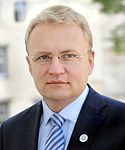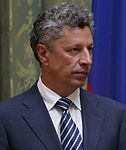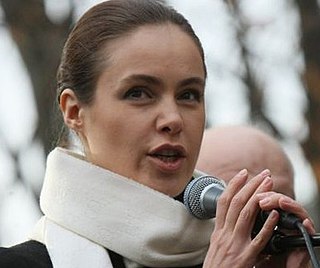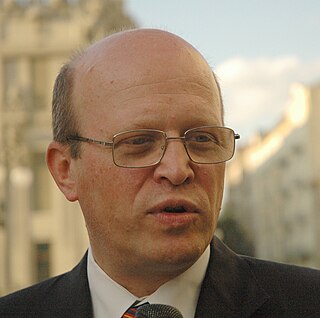| |||||||||||||||||||||||||||||||||||||||||||||||||||||||||||||||||||||
423 of 450 seats of the Verkhovna Rada of Ukraine 226 seats needed for a majority | |||||||||||||||||||||||||||||||||||||||||||||||||||||||||||||||||||||
|---|---|---|---|---|---|---|---|---|---|---|---|---|---|---|---|---|---|---|---|---|---|---|---|---|---|---|---|---|---|---|---|---|---|---|---|---|---|---|---|---|---|---|---|---|---|---|---|---|---|---|---|---|---|---|---|---|---|---|---|---|---|---|---|---|---|---|---|---|---|
| Opinion polls | |||||||||||||||||||||||||||||||||||||||||||||||||||||||||||||||||||||
| |||||||||||||||||||||||||||||||||||||||||||||||||||||||||||||||||||||
 Winning party in each constituency in party-list (above) and single-member voting (below) | |||||||||||||||||||||||||||||||||||||||||||||||||||||||||||||||||||||
| |||||||||||||||||||||||||||||||||||||||||||||||||||||||||||||||||||||
A snap election of the Verkhovna Rada took place on 26 October 2014.
A snap election is an election called earlier than expected.
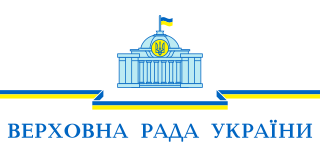
The Verkhovna Rada of Ukraine, often simply Verkhovna Rada or just Rada, is the unicameral parliament of Ukraine. The Verkhovna Rada is composed of 450 deputies, who are presided over by a chairman (speaker). The Verkhovna Rada meets in the Verkhovna Rada building in Ukraine's capital Kiev.
Contents
- Background
- Electoral system
- Non-voting areas
- Campaign
- Registered parties and candidates
- Results
- Voter turnout
- Summary results
- Opinion polls
- Conduct
- Government formation
- By-elections
- 2015
- 2016
- Notes
- References
- External links
Petro Poroshenko, the President of Ukraine, had pressed for early parliamentary elections since his victory in the presidential election. [1] The July breakup of ruling coalition gave him the right to dissolve the parliament, so on 25 August 2014 he announced the early election. [2]

Petro Oleksiyovych Poroshenko is the fifth and current President of Ukraine, in office since 2014. He served as the Minister of Foreign Affairs from 2009 to 2010, and as the Minister of Trade and Economic Development in 2012. From 2007 until 2012, Poroshenko headed the Council of Ukraine's National Bank.
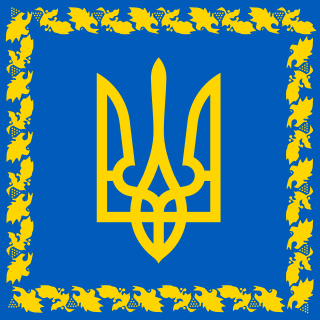
The President of Ukraine is the Ukrainian head of state. The president represents the nation in international relations, administers the foreign political activity of the state, conducts negotiations and concludes international treaties. The president is directly elected by the citizens of Ukraine for a five-year term of office, limited to two terms consecutively.
The voting was not provided in the annexed Autonomous Republic of Crimea and Sevastopol. The voting also did not reach significant parts of Donetsk and Luhansk oblasts because of the ongoing War in Donbass. [3] Because of this, 27 out of the 450 seats in the 8th Verkhovna Rada remained unfilled.

The Crimean Peninsula was annexed by the Russian Federation, from Ukraine, in February–March 2014 and since then has been administered as two Russian federal subjects—the Republic of Crimea and the federal city of Sevastopol. The annexation followed a military intervention by Russia in Crimea that took place in the aftermath of the 2014 Ukrainian revolution and was part of wider unrest across southern and eastern Ukraine.
![Autonomous Republic of Crimea administrative division of Ukraine since 1992, not occupying the whole peninsula [see Q15966495 for Russian subdivision proclaimed in 2014]](https://upload.wikimedia.org/wikipedia/commons/thumb/a/aa/Flag_of_Crimea.svg/320px-Flag_of_Crimea.svg.png)
The Autonomous Republic of Crimea is, de jure, an autonomous republic of Ukraine encompassing most of Crimea, though, de facto, in 2014 it was annexed by Russia and incorporated, as the Republic of Crimea, as a Russian federal subject.
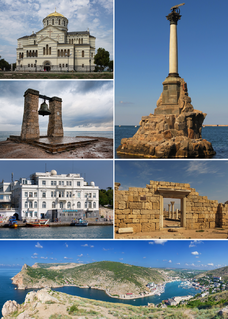
Sevastopol is the largest city on the Crimean Peninsula and a major Black Sea port. The city is administered as a federal city of the Russian Federation following Crimea's annexation by Russia in 2014, though Ukraine and most of the UN member countries continue to regard Sevastopol as a city with special status within Ukraine.
This election can be called a realigning. Ruling in 2010-2014, the Party of Regions did not participate in this election, while its informal successor Opposition Bloc showed modest result with only 9.43%. For the first time since Ukrainian independence, the Communist Party of Ukraine gained no parliamentary representation. Four newly created parties got the highest support in this election: Petro Poroshenko Bloc (formed in July 2014 by Poroshenko's supporters), People's Front (split from Fatherland in August 2014), Self Reliance (registered in 2012) and Opposition Bloc (formed in September 2014 by a group of the former Party of Regions members).
In political science and political history, a realigning election is a set of sharp changes in issues, party leaders, regional and demographic bases of power of political parties, and the structure or rules of the political system, such as voter eligibility or financing. The changes result in a new political power structure that lasts for decades, replacing an older dominant coalition. Scholars frequently invoke the concept in American elections and occasionally those of other countries. US examples include the 1896 presidential election, when the Republican Party (GOP) became dominant, and the 1932 election when the Democratic Party became dominant.

The Party of Regions is a pro-Russia political party of Ukraine created in late 1997 that then grew to be the biggest party of Ukraine between 2006 and 2014. Since the February 2014 Ukrainian revolution, the party has not competed in elections and most of its representatives have left the party to continue their careers in other parties. Best known former party members are former Prime Minister Mykola Azarov and former President of Ukraine Viktor Yanukovych; both fled to Russia in February 2014.
Opposition Bloc is a Ukrainian political party that was founded in 2014 as six parties that did not endorse Euromaidan merged. Legally, the party was created by renaming the lesser-known party Leading force.
Since the parallel voting system was used, the allocation of seats is not proportional. For example, the winner in party-list voting (22.12%) People's Front got second faction with 82 seats, while Petro Poroshenko Bloc took 123 seats with 21.82% of votes.
Parallel voting describes a mixed electoral system where voters in effect participate in two separate elections for a single chamber using different systems, and where the results in one election have little or no impact on the results of the other.

People's Front is a political party in Ukraine founded by Arseniy Yatsenyuk and Oleksandr Turchynov in 2014.
The work of the new parliament started on 27 November 2014. [4] On the same day, five factions formed the "European Ukraine" coalition: Petro Poroshenko Bloc, People's Front, Self Reliance, Radical Party and Fatherland. [5] On 2 December the second Yatsenyuk government was approved. [6]

The Verkhovna Rada of Ukraine of the 8th convocation is the current convocation of the legislative branch of the Verkhovna Rada, Ukraine's unicameral parliament. The 8th convocation meets at the Verkhovna Rada building in Kiev, having begun its term on November 27, 2014 following the last session of the 7th Verkhovna Rada. Its term will last five years and is scheduled to close its last session on November 27, 2019.
Union "Self Reliance" or "Self Help" is a political party in Ukraine. It is led by the incumbent mayor of Lviv, Andriy Sadovyi. It was founded on 29 December 2012, and identifies with the ideology of "Christian morality and common sense." The name of the party is similar to the name of the NGO, founded by Sadovyi in 2004. The party won 33 seats in the 2014 Ukrainian parliamentary election.

The Radical Party, whose official name is the Radical Party of Oleh Lyashko and formerly known as the Ukrainian Radical-Democratic Party, is a political party in Ukraine which was registered in September 2010.


